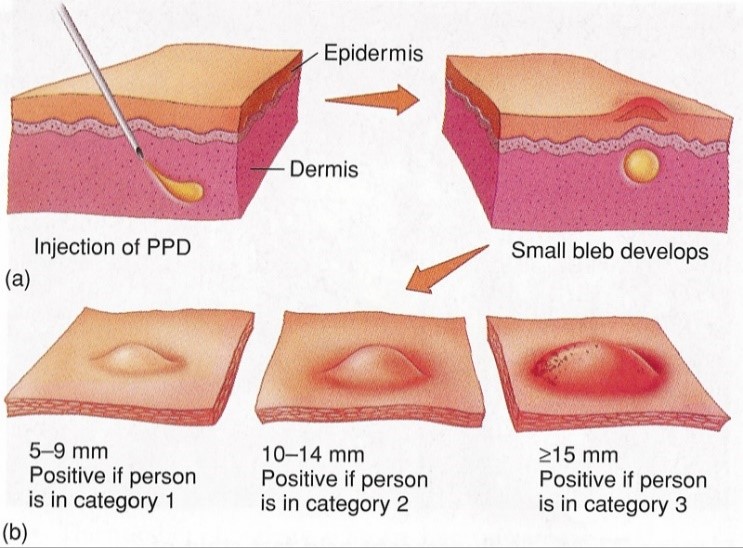Tuberculosis (TB) is a serious infection affecting your lungs. The bacterium Mycobacterium tuberculosis causes this condition and spreads through air. It attacks you when your immune system becomes weak. It produces symptoms such as weight loss, fever, night sweats and coughing. There are different tests available to diagnose TB and a skin test is the most common way. What does a positive tb skin test look like? What does it mean?
What Is a TB Skin Test?
A tuberculin skin test (also called a Mantoux tuberculin test) is done to see if you have ever been exposed to tuberculosis (TB). A lab assistant will put a small amount of TB antigens in your skin, usually inside the top layer of your skin on the inside of your forearm. If you have ever been exposed to the TB bacteria (Mycobacterium tuberculosis), your skin will react to the antigens by developing a firm red bump at the site within two days.
The TB protein or antigens used during the test are known as purified protein derivative (PPD). Your skin will be exposed to a certain amount of PPD to check how your skin reacts to it. The test is quite accurate in most cases. Your doctor may ask for a skin test if they notice signs and symptoms of tuberculosis.

How Do You Read a TB Skin Test?
While interpreting your skin test, your doctor will consider two factors: the size of the firm bump that you develop a couple of days after the test; and your risk of being infected with TB. You may get negative or positive TB skin test result.
Normal (Negative Results)
You do not have TB if you receive negative results. It means no firm bump will appear after you have been exposed to TB antigens. You are considered normal even if a bump appears but is no bigger than 5 millimeters.
Abnormal (Positive Results)
Your test is considered positive in the following circumstances:
- A firm bump develops and is about 5-9mm in size. It usually means you belong to a high-risk group.
- You are in a moderate-risk group if your bump is between 10mm and 14mm in size.
- You are in a low-risk group if your bump is larger than 15mm in size.
Positive TB Skin Test Result: What Does It Mean?
A positive test result means you are a carrier of TB germs. You may even have a positive chest x-ray but no TB symptoms. The absence of TB symptoms means your infection is not contagious and you cannot pass it on to others. In other words, you have latent TB.
It is important to note that the test cannot tell if you really have a TB infection or you have been vaccinated for TB in the past. It is therefore important to conduct other tests, including X-ray and a sputum culture to confirm if your TB infection is active.
Watch this video to learn how the TB skin test is done and how to measure the result.
False-Positive and False-Negative Results
You may end up getting a false positive TB skin test if you have received a bacillus Calmette-Guerin (BCG) vaccine in the past. While BCG is not given in the United States because it is not that effective, it is still in use in other countries. What it implies is that it is not a good idea to rely solely on a skin TB test to confirm if your TB germs are active. In fact, one in five people who may have been infected do not show any reaction to antigens. Similarly, you may get a false-negative result if you are taking steroids or undergoing chemotherapy. You need to go for a chest x-ray, a sputum test or a CT scan to confirm an infection.
Other Factors May Affect the TB Test Results
There are a number of other factors having a huge impact on your TB skin test. For instance:
- Your test result will be different if you are taking medications that suppress your immune system.
- Some vaccinations for infections like mumps, measles, chickenpox, or polio may change TB test results, especially when you are vaccinated about six weeks before you take the tuberculin test. A recent infection can also interfere with your test results.
- You test result may be different if you undergo one too early. Your immune system reacts to TB germs in about 2-10 weeks.
- A TB skin test may not give accurate results for babies younger than 3 months because their immune system is not developed enough to cause a reaction.
- Someone who gets regular TB skin tests quite often may not react to a TB skin test. This is more common in healthcare workers.
